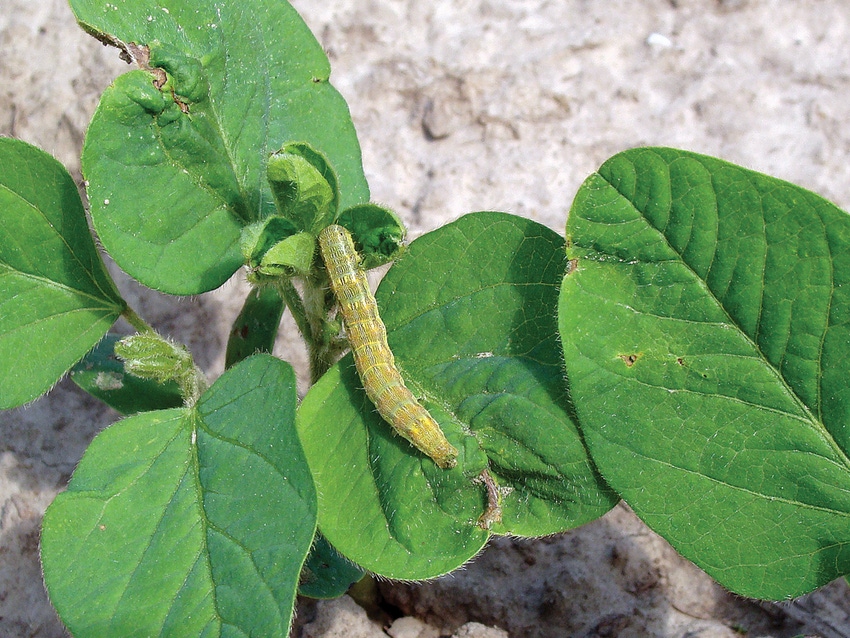
“The valuable research that is being generated through this program will provide industry and academia further opportunity to enhance our collective understanding of insect management, leading to even more effective solutions for farmers in the future,” said Sherri Brown, vice president of science strategy for Monsanto and co-chair of the program.
May 12, 2015

Jeff Gore, research entomologist at Mississippi State University’s Delta Research and Extension Center, is one of six scientists who have been selected to receive grants through Monsanto’s Insect Management Knowledge Program.

Jeff Gore
The program, which started in 2013 as the Corn Rootworm Knowledge Program, provides merit-based awards of up to $250,000 per award per year for up to three years for research that the company says “will not only enhance the collective understanding of insect management but help address significant challenges in agriculture.”
Dr. Gore’s research will be aimed at learning more about Helicoverpa zea, the scientific name for the insect pest also known as the corn earworm and bollworm. The other investigators working on the project will be Angus Catchot, Don Cook and Fred Musser, all scientists with Mississippi State University.
“The valuable research that is being generated through this program will provide industry and academia further opportunity to enhance our collective understanding of insect management, leading to even more effective solutions for farmers in the future,” said Sherri Brown, vice president of science strategy for Monsanto and co-chair of the program.
The IMKP is guided by a 10-person advisory committee that is co-chaired by Dr. Brown and Dr. Steven Pueppke, associate vice president of research and graduate studies for Michigan State University. The committee consists of academics and growers, and provides guidance on integrated pest management and recommendations for areas of basic research on insect resistance and management that would be of interest to growers, the academic community and Monsanto.
The six awards granted focus on a number of items from addressing the management of insect threats such as whitefly, soybean aphid, and corn earworm resistance to creating a new model for determining how key risk factors affect the development of insect resistance in transgenic Bt corn.
Grant recipients
Besides Dr. Gore, the grants will be received by:
Peter Ellsworth, University of Arizona
Felicia Wu, Michigan State University
Matthew O’Neal, Iowa State University
Tom Coudron, USDA-ARS
Philip Zamore, University of Massachusetts
Gore’s project should help growers and consultants be more precise when trying to determine appropriate control measures for corn earworm and bollworm, two of the more economically damaging pests in cotton and other row crops.
To date, experiments that have aimed to quantify corn earworm or bollworm densities on host plants have been done through random sampling, according to Gore’s proposal. This has limited the results to specific locations and conditions and has resulted in a limited data set that may not represent the true population dynamics over a large geography.
Gore and fellow researchers will use a more targeted sampling plan to gain a better understanding of the temporal and spatial distribution of Helicoverpa zea larval populations on the landscape.
“We will rely on reports from consultants and retailer field scouts to identify field where active infestations of H. zea are occurring,” he said. “Samples will be taken in the infested fields as well as other fields in the near vicinity to quantify the infestation on a per acre basis prior to an insecticide application being made.
Level of control
“Additional samples will also be collected after an insecticide application has been made to quantify the level of control. For all fields that are sampled, every attempt will be made to determine the crop variety, planting date and insecticide use history.”
The researchers will also conduct a weekly phone surveys with crop consultants, asking them to rank bollworm density on a on a scale of 0-10 by crops in their region across the state of Mississippi. Those data will provide additional population estimates by crop and region over the course of the season.
That’s one of four objectives of the study Gore and other members of the group will undertake over the next three years to try to provide a better understanding of how corn earworm and bollworm populations develop over time and how best to control them. The other three:
To quantify Helicoverpa zea emergence from agronomic crops and wild hosts in the Mid-South.
To further investigate the delayed emergence of H. zea from refuge and non-refuge hosts and their contribution to overall population dynamics.
To provide a source of moths from various hosts and locations for additional biochemical and molecular characterization.
Other grants under the program will be put to use for other purposes.
Field testing
“This IMKP grant will allow us to move our laboratory-based studies of the molecular mechanisms of gene silencing in insects into an actual field testing setting, which I couldn’t do with more traditional biomedical research funding agencies,” said Dr. Philip Zamore, professor of biochemistry and molecular pharmacology, and co-director of the RNA Therapeutics Institute at the University of Massachusetts Medical School.
"I am very appreciative that the Insect Management Knowledge Program is providing a grant for our team to model how the most devastating pest of U.S. corn, the corn rootworm, develops resistance to insect control products, and how management practices can help combat this problem,” said Felicia Wu, university distinguished professor at Michigan State University.
Monsanto established the CRW Knowledge Grant Program in 2012. The program funded six proposals in 2013 and was continued in 2013 resulting in seven funded proposals. The focus of the 2012 and 2013 programs was on Corn Rootworm research.
The scope of the program is being expanded for 2014, under the new name of Insect Management Knowledge Program. This new program expands coverage to the following U.S. row crops: cotton, corn and soybeans and to all economically significant row crop pests.
For more information on the corn earworm and bollworm, visit http://entnemdept.ufl.edu/creatures/veg/corn_earworm.htm
About the Author(s)
You May Also Like





